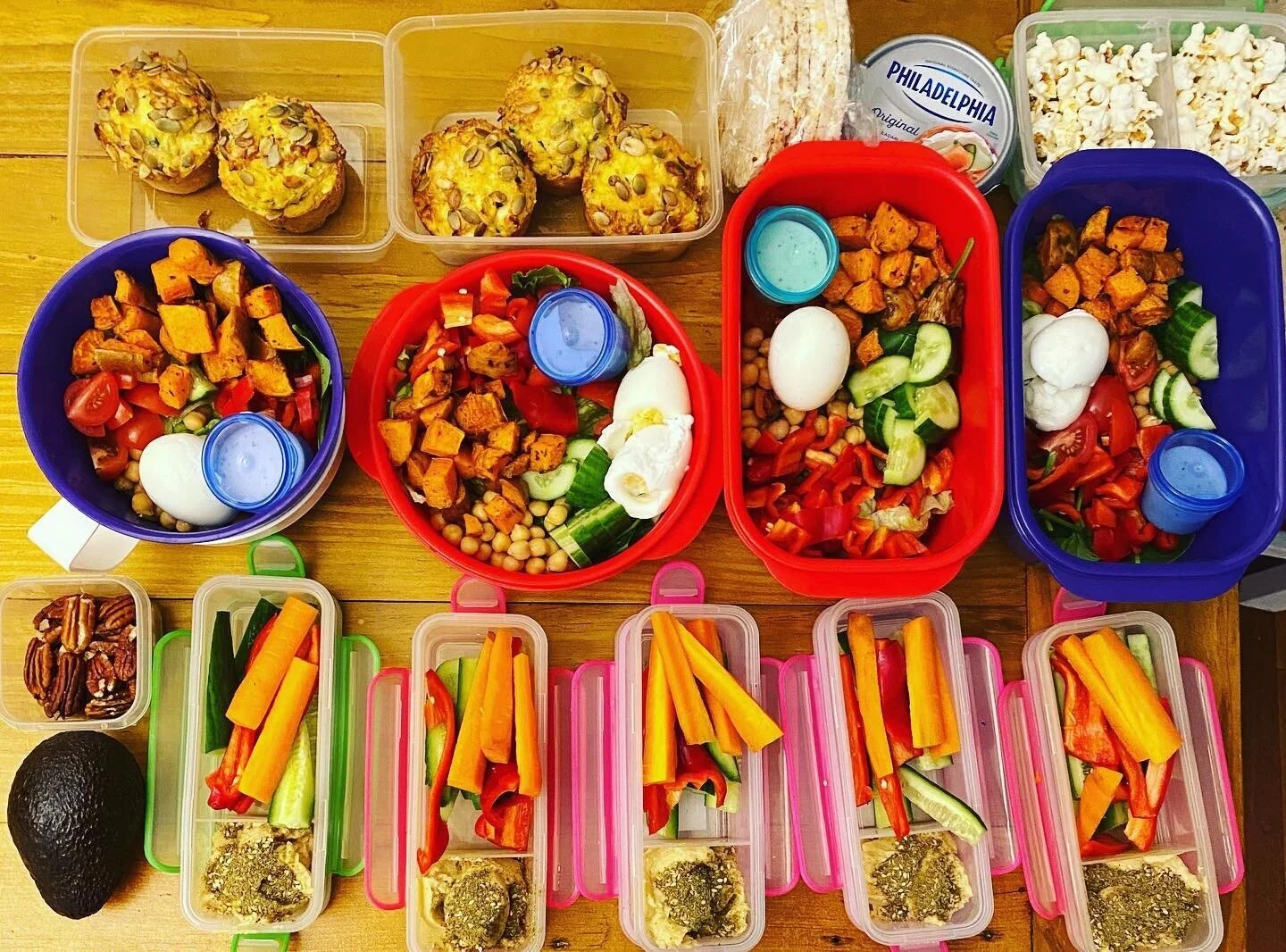There are many benefits to meal planning. First is that it keeps you on track with your nutrition. (Failing to plan is planning to fail, right?) Second is that it puts you in complete control of your food intake.
When you wing your meals on the fly or go out, there’s no telling how much food you’re actually eating (studies show that people poorly self-monitor meals) or what’s really being served to you. Restaurants are notorious for adding ingredients behind your back, like processed seed oils to dressings. Third and finally is how much time it saves. Instead of spending hours every day trying to figure out what to eat, you can get it all done in one day.
Think of how many hours you’ve saved! But there’s an art to meal prepping. Many people have written books about it. You can use them at home or during one of our challenge meal plans. So, let’s not wait any longer- it’s time to get started!
Planning and Shopping
Consider this “stage one” of your meal prep. Instead of going shopping without a clue about what to buy, start by committing things to paper. That means writing down your menu. Breakfast, lunch, dinner, and optional snacks and dessert. And don’t think you have to go overboard with fancy meals or complicated recipes. Start with your favourite go-to recipes.
Depending on your menu, lifestyle, and schedule, you can either create a full menu for the entire week or split it into 3-4 days. Some people like to get it all out in one day, while others prefer planning, buying, and cooking their food every 3-4 days. Find what works for you!
Once you’ve set up your weekly menu, it’s time to go shopping. But not so fast! You need to make sure that everything is well within your budget. When grocery shopping for meal prep, be sure to have an accurate list of every single ingredient that goes into your food. On our challenge meal plans, we will provide both a regular shopping list for every week plus an extra “Stock Your Pantry” list of essentials. These include bulk ingredients like almond flour, olive oil, protein powder, and seasonings.
Kitchen Time
Now that you’re done shopping, it’s time to head over to the kitchen. Make sure you’ve set a block of time specifically for your prep. You don’t want to head home only to collapse on the couch and watch TV while your food sits in around. Get your prep out of the way ASAP!
During your prep, it helps to take notes. If there’s a better way to cook your veggies, write it down. If a recipe needed tweaking or you added something new that made it absolutely delicious, write it down. Pretty soon, you’ll become the head chef of your own exclusive cafe!
Efficiency is key, especially if you’re already short on time, which is why you don’t have to worry about making everything from scratch. Salad dressings, sauces, and condiments can be bought at the store, provided you find a brand with clean ingredients. For instance, In our plant-based Meal Plan for the challenge there’s a recipe for vegan feta and parmesan. But if you can find a good quality one at the store, then feel free to buy that instead.
Portion Control
A major advantage of meal prepping is portion control. So, if you’re prepping for multiple days at a time, remember to measure out individual portions for each day. If you made an omelet that has four servings, either slice it into four quarters or have four storage containers to put each serving into.
Don’t worry about having to cook elaborate meals for each meal and day of the week. Not only can that be expensive, but it can also suck away a huge chunk of your time. Look for recipes that have multiple servings, such as stews, soups, giant salads, stir-fries, and so on. With things like smoothies, portion the ingredients out for individual servings into little bags or containers. So, if I was going to make a strawberry banana smoothie, I’d already have measured out the ingredients and stored them away for the next morning. The only thing left for me to do come breakfast time is to dump them into a blender, mix, and drink up!
No Food Goes to Waste
Uh-oh; looks like we’ve got some leftovers. Stop- don’t throw anything away! Let no food go to waste. Re-purpose them into future meals like scrambled eggs, stir-fries, and salads. Or, put them away in the freezer. You could always defrost them later on for emergencies. Which reminds me- always be prepared for the unexpected. I know that life gets in the way. Something comes up, and suddenly we’re late for dinner. Or our food spoils. Don’t worry! Have a backup plan. Maybe keep some items stocked up for these situations. Canned chicken or fish. Raw nuts and seeds. Kale chips. Hard-boiled eggs. Frozen leftovers. Expect the unexpected with your meal plan; that way, you won’t be caught off guard and will keep the momentum going.
Over to You
Ready to meal prep like a pro? Share your tips and tricks with everyone on what helps you!




